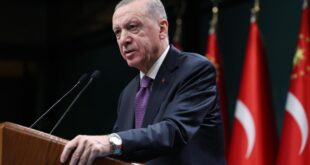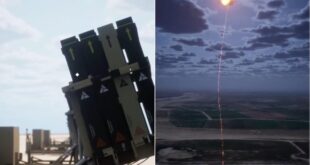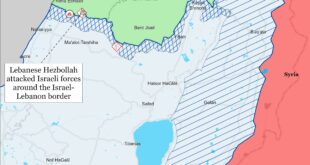In the 4½ months since U.S.-backed forces declared victory over the Islamic State terror group’s last shred of territory in Syria, there has been a steady drumbeat of doubt.
One by one, military leaders, diplomats and experts began raising concerns, aiming to convince policymakers that for all of the success in rolling back IS’s self-declared caliphate, the group was far from dead.
“This is not the end of the fight,” U.S. Special Representative for Syria Ambassador James Jeffrey warned, just days after the victory celebrations in Syria in late March.
“That will go on,” he said. “It is a different type of fight.”
A series of new reports, citing intelligence from United Nations member states, the U.S. military and other sources, now indicate it is a fight that IS is increasingly well-positioned to win.
“As long as it can gain revenue, it will remain a danger,” the Rand Corp. declared Thursday in “Return and Expand?” a report on the terror group’s finances and prospects following the collapse of its caliphate.
IS assets
The Rand report estimates IS had perhaps in excess of $400 million in assets by early 2019.
Intelligence from U.N. member states, included in another recent report, indicates even after the fall of the caliphate, IS may still have up to $300 million at its disposal.
But even if the actual figure is lower, there are no indications that efforts to defeat IS has left the terror group wanting.
“It still has certainly more than enough money to survive for quite a while,” Rand senior economist Howard Shatz, one of the authors of the Rand report, told VOA.
“It’s a cash organization. Its expenses had to match its revenues,” he said. “We haven’t seen evidence of drawing from reserves or expenses outstripping revenues.”
And despite repeated strikes targeting senior IS leaders in Syria and Iraq, the group’s infrastructure and financial leadership has remained solid.
“It is possible to lower their level of effort, to lower their competency,” Shatz said. “But if there’s any let up, they do have people who are in the organization, come up through the organization, and take over.”
“Some of those people will be better. Some of those people will be worse. But the people are there,” he said.
Estimated number of fighters
The best U.S. estimates indicate an IS pool of anywhere from 14,000 to 18,000 so-called members across Syria and Iraq, many of whom are thought to be fighters.
While many of those fighters have gone underground, others remain active, targeting key community leaders in Syria and Iraq for assassinations, and burning crops to create turmoil.
Officials with Operation Inherent Resolve, the U.S.-led military operation to counter IS, also warn the terror group has solidified in capabilities, enhancing its command and control and logistics infrastructure in Iraq.
Military and diplomatic officials say IS also has retained support in rural parts of Iraq, especially in areas extending south of Mosul all the way to Baghdad, the capital.
In Syria, where military officials describe IS as “resurgent,” the group is using large displaced persons camps, like the one at al-Hol, to its advantage.
Despite efforts by U.S.-backed Syrian Democratic Forces to provide security for al-Hol, coalition officials warned the U.S. Defense Department inspector general that thousands of IS supporters have been able to spread the group’s ideology “uncontested.”
“We have been clear that there is work left to do,” Pentagon spokesman Commander Sean Robertson said.
“ISIS has prepared its resources to operate underground,” he said, adding that in the face of the terror groups’ resurgence, “we continue to work with allies and partners to enable stabilization efforts.”
In some ways, this is what U.S. military officials have been worried about since last year, when the Pentagon warned that despite mounting territorial losses, IS was “well-positioned to rebuild and work on enabling its physical caliphate to re-emerge.”
According to a recent U.N. report, rebuilding efforts would still seem to include key IS leaders, including the group’s self-declared caliph, Abu Bakr al-Baghdadi.
“This process is more advanced in Iraq, where Abu Bakr al-Baghdadi and most of the [IS] leadership are now based,” the report said, a conclusion supported by some Western intelligence officials.
Key leaders survived
The U.N. said other key leaders have also survived “elsewhere in the former ‘caliphate’ area and parts of the immediate neighborhood,” though the report admits communication remains difficult.
The U.S.-led coalition has, at times, described the terror group’s current strategy as “strategic patience.”
“While their leadership hides for the sake of self-preservation, some groups of fighters have been attempting to create safe havens,” the coalition told VOA in a statement.
Still, there is persistent concern that even as IS seeks to regain its relevance on the battlefield, it is finding success in using social media to recreate the perception it is as relevant as ever.
This past April, al-Baghdadi was able to deliver his first video speech since he was shown giving a sermon in July 2014 at the al-Nuri Mosque in Mosul, Iraq.
“Jihad continues until judgment day,” al-Baghdadi said, urging IS followers to fight on.
In the past few months, IS has also ramped up its video messaging, showing fighters from Africa, East Asia, the Caucuses and elsewhere renewing their pledge of allegiance to al-Baghdadi.
“The so-called ISIS caliphate has been destroyed,” State Department Counterterrorism Coordinator Nathan Sales said while briefing reporters earlier this month. “But the ISIS brand lives on around the world.”
Researchers, though, fear IS has one more card to play as the group seeks to reassert itself — its detailed record-keeping for the areas it once ruled.
“We know during the time of the caliphate, the Islamic State was recording financial details about individuals living in its territory,” said Shatz, the Rand economist.
“I don’t think that information goes away,” he said, adding when the time is right, the group knows whom to squeeze. “There are a lot of people now who are known to the Islamic State who the Islamic State could come to and try to get money from.”
 Eurasia Press & News
Eurasia Press & News



